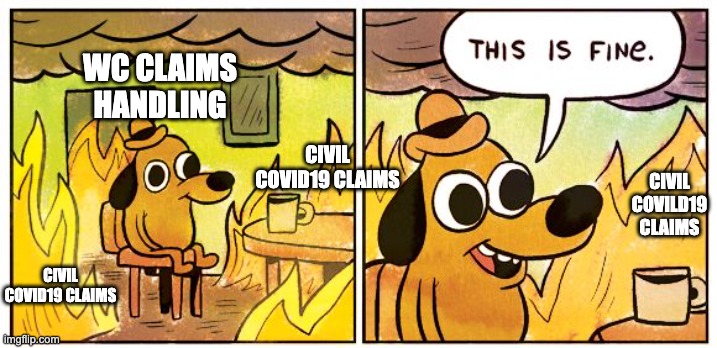Happy Wednesday, dear readers! Last week, your humble blogger wrote about the Bradley panel decision, in which the WCAB held that a Kite addition was inappropriate as between two different systems of impairment (psyche and orthopedic) because neither reporting physician was competent to comment on whether the two should be added or combined. I also received a bizarre e-mail from the publishers of The Kite Runner (great book by the way!) telling me to stay away from their author and his kites.
One of my beloved readers sent me a copy of the WCAB’s decision in Kidd v. Alameda Contra Costa Transit District, another relatively recent panel decision from September of last year, which appears to go the other way from Bradley (no, dear readers, I’m not Kidding you…)
Applicant Kidd had claimed injury to her head, neck, back, shoulders, and psyche as a result of an MVA while working as a bus driver. The psyche AME assigned WPI based on a GAF score of 55, and found that 70% of the psychiatric disability was caused by the MVA, 20% by the pain and physical problems resulting from the MVA, and 10% by non-industrial factors.
The orthopedic AME found 26% WPI for the cervical spine, 10% for the right shoulder, and gave a 3% pain add-on, also finding that 100% of the orthopedic permanent disability was caused by the MVA.
When asked, he psyche AME opined that adding the psyche WPI to the orthopedic WPI (as opposed to combining the two) was the best approximation of the disability because the orthopedic injuries diminished motivation to engage in activities, while the psychiatric disability lowered effectiveness of medical intervention.
At trial, the WCJ added the permanent disability rather than combine it, resulting in an award of 92% PD. Defendant appealed arguing that the appropriate PD is a combination of the 54% PD from the orthopedic claim and the 38% PD from the psychiatric conditions (this would have resulted in a final PD of 71%.
The WCAB denied reconsideration, adopting the reasoning of the psyche AME and the trial judge.
Your humble blogger of course was not participating in this case at all and is just being a Wednesday-morning quarterback, a back seat driver, an armchair general, etc. So, of course, I’m going to handle this issue with Kidd gloves. But looking at the breakdown and the reasoning from the psyche AME, we have 20% causation of the psychiatric permanent disability resulting directly from the effect of the orthopedic injuries, rather than the psychiatric injury directly from the MVA. We also have the justification for adding permanent disability rather than combining it based on the orthopedic injuries causing withdrawal and less enjoyment in life.
In other words… aren’t all of these psychiatric issues compensable consequence of the orthopedic injury? After all, we have the “pure” psychiatric injury resulting from the MVA, which is the cause of 70% of the permanent psychiatric disability. But when you get to justifying the adding of impairment and 20% of the cause of the permanent psychiatric disability… aren’t all of these compensable consequences?
Well, then let’s look at Labor Code section 4660.1(c)(2) which specifically prohibits us from increasing permanent disability for psychiatric compensable consequences absent certain circumstances. From your humble blogger’s review of the Kidd decision, it does not appear that the WCAB panel, nor the trial Judge, addressed 4660.1 as an argument so it’s not clear if it was raised. But it would be interesting to try this argument should similar facts come up.
Furthermore, and, again, looking at the Bradley decision from last week – is the psychiatric AME competent to comment on the “synergistic” effect, or lack there of, between orthopedic and psychiatric disability? Bridges only work if they connect both sides, so while the psychiatric AME might be in a good position to conclude that the orthopedic injuries increase the psychiatric burden, what is the evidence that the psychiatric impairment is increasing the burden on the orthopedic injury?
Recall please, the original Kite decision had to do with a panel QME concluding that the impairments assigned to each hip should be added instead of combined. The same PQME had examined applicant for both hips and was competent to comment on hip impairment. Kidd is taking it a step further. In other words, to the Kite is the mommy goat, then Kidd is the… well… the Kid.
Seeing how your humble blogger has exhausted his supply of both Kidd puns and comments, here’s hoping to see you on Friday again, dear readers!



